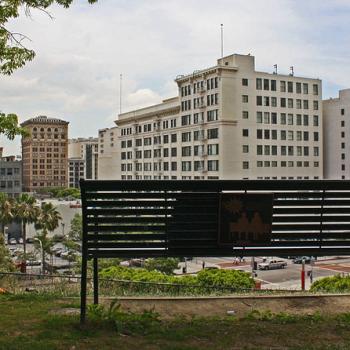These fights, in other words, are in the air; they are the primary reality affected by what the court handed down. Denying graduate students and adjuncts the right to a union is a fundamentally non-Catholic position; it may, in fact, be a sin.
To understand why, we need to begin with some facts. Graduate students and adjunct faculty are terribly over-worked and under-compensated in this country:
As the cost of higher education continues to rise, universities are trying to balance tuition with improving student outcomes and supporting groundbreaking research, meaning they can be hesitant to shift costs to students and raise tuition even further. Hiring adjunct faculty has been one place where universities look to cut costs.
Recent data shows there are approximately 1.4 million part-time faculty across higher education, a share that has grown by 66 percent over the last 40 years, with part-time faculty now numbering more than tenured and tenure-track faculty combined. In 2016, 73 percent of faculty jobs were not tenure track, according to the American Association of University Professors (AAUP).
Adjunct professors are a cheap pool of labor that represent huge cost savings for universities. “Using adjuncts is a lot less expensive,” explains Kim Tolley, professor in the school of education at Notre Dame de Namur University in Belmont, California. “What we’re seeing is full-time positions aren’t being filled when people leave. If one full-time professor earning, say, $130,000 per year teaching two or three courses a semester could be replaced with two adjuncts that might make $7,000 per course, that’s a huge savings.”
The AAUP found that in the 2016–2017 academic year, median pay for all part-time faculty at religiously affiliated universities was $4,773 per course section. And Faculty Forward, an advocacy project of the Service Employees International Union (SEIU), reports that Jesuit colleges in 2013 saved an average of about $42,000 for every course an adjunct taught. (US Catholic)
Adjuncts do not, in 95% of cases, receive benefits. A hundred or more hours a week of labor in teaching, grading, meeting with students, and more might only be rewarded by compensation equivalent to (or even less than) what a full-time staff member makes at McDonalds (and often for more hours of labor!). Graduate student stipends (which sometimes do come with benefits) range from $13,000 to $34,000 a year. Again, this puts many in the position of making less than service workers. This figure itself is not all that helpful: those making around $30,000 a year are likely to be at our country’s wealthiest institutions. Most graduate students are at state and other large research universities, where they are paid less. At many institutions, graduate students are expected to take classes, teach classes, carry out their own research, and attend conferences (for which travel may very well not paid for by their employer).
We are, in other words and in spite of the prestige academic work may carry in some circles, dealing with people who work higher hours than most Americans, but who make comparatively little money (and that’s not even to discuss healthcare and other benefits). Such people are not riding high; they’re often struggling, especially when we consider that the cost of living in cities (where many universities are located) is often exceptionally high.













